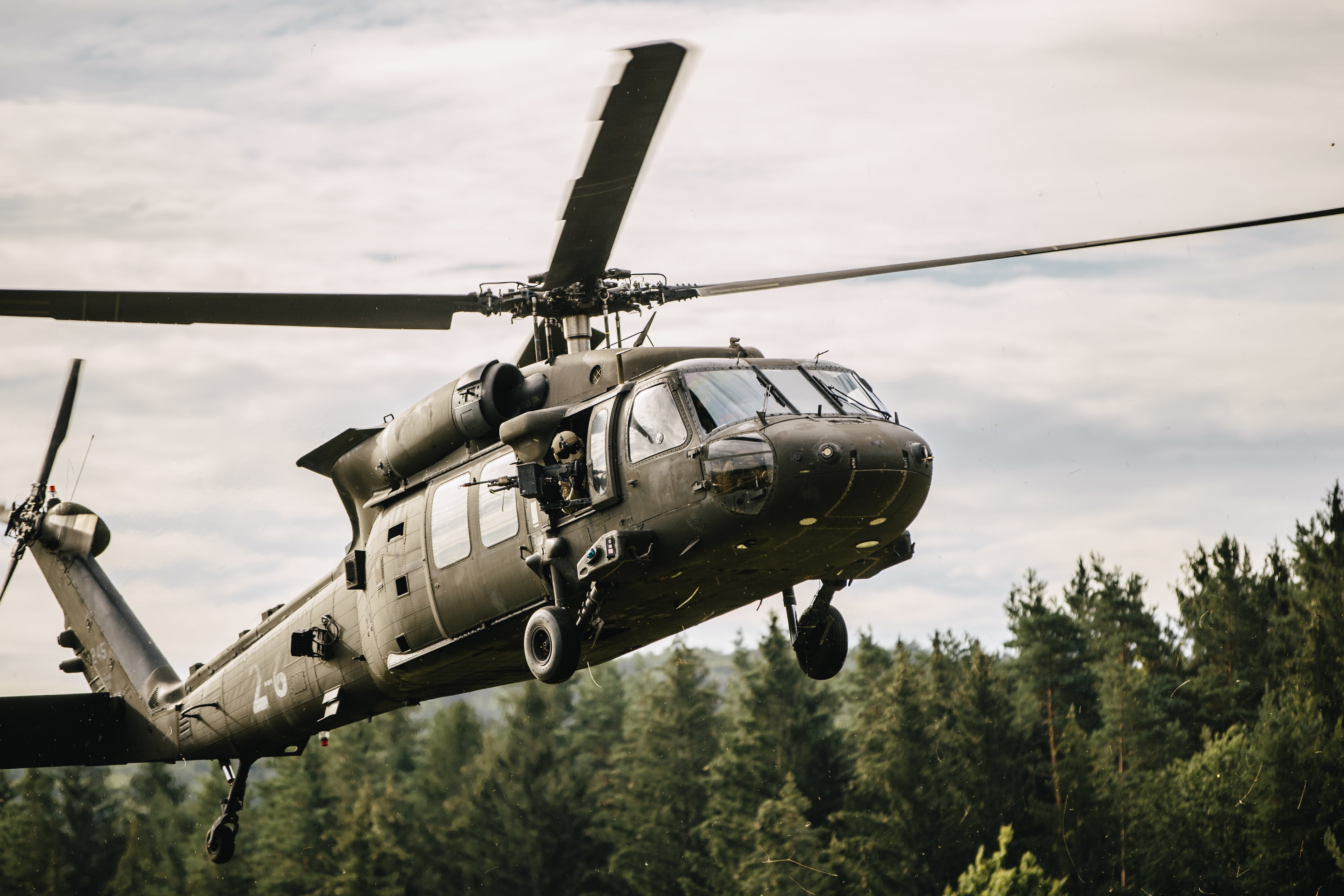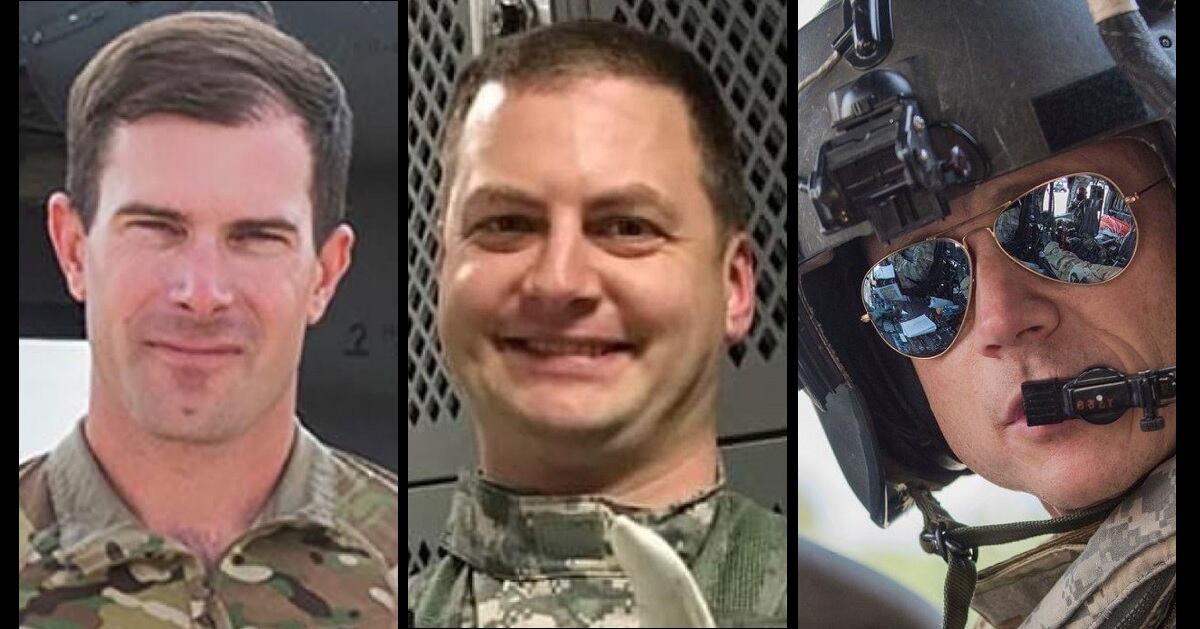Fog and precipitation obscured the rough terrain below as a UH-60 Black Hawk flew over Idaho in early February. Moments later, the helicopter slammed into a mountainside, destroying the aircraft and killing all three crew members.
Weather was a significant factor in the mishap, but the primary cause was the crew’s inability to complete an emergency shift to instrument flight before impact, according to preliminary results of an Army Combat Readiness Center investigation detailed Friday during a press conference.
The Idaho National Guard helicopter was on a routine training mission Feb. 2 south of Lucky Peak, near Boise. As they started to head home, the weather worsened and they lost sight of the ground and surrounding terrain.
The crew began to shift from visual navigation, using references outside the aircraft, to relying solely on the instruments inside the cockpit to maintain situational awareness.
“They only had 14 seconds from the time the crew initiated [instrument] procedures to the time the aircraft impacted the ground,” said Col. Chris Burt, the Idaho Army National Guard’s state aviation officer.
The crew consisted of Chief Warrant Officer 4 Jesse Anderson, 43; Chief Warrant Officer 3 George “Geoff” Laubhan, 39; and Chief Warrant Officer 3 Matthew Peltzer, 43.
One of the most difficult emergencies
The crew was trying to shift to what is known in the aviation community as “inadvertent instrument meteorological conditions,” or IIMC, an unplanned event in which pilots have lost all visual cues and don’t know if their aircraft is turning or even level with the ground.
RELATED

It’s one of the “most difficult and dangerous emergency procedures” that helicopter pilots can face, Burt explained.
“The crew initiated the procedure appropriately while maintaining excellent crew coordination,” he added. “However, the crew was unable to successfully establish a rate of climb that would allow the aircraft to clear the rising terrain and ridge line.”

Peltzer was at the controls originally, but as soon as he announced that he lost his visual references, Laubhan took control of the helicopter. Laubhan was the pilot in command and taking control was “exactly what we would expect,” Burt said.
The training flight had departed Gowen Field at 6:50 p.m. The crew trained with night vision goggles and practiced medical evacuations for roughly an hour. Peltzer was in the right front seat, Laubhan was in the left front seat and Anderson was in the right crew chief station.
The flight out to the training area was without incident and the scenarios went smoothly, with no indications of mechanical issues, according to the preliminary investigation. All aircraft inspections and required maintenance were up to date, investigators determined.
It wasn’t until the crew started their return flight that the weather shifted dramatically.
Shifting to flight instruments in the cockpit during inclement weather is a procedure briefed prior to each flight and regularly practiced in simulators.
“While that training is valuable, it does not truly replicate the dangers of a real world [IIMC] emergency,” Burt said.
The best way to survive such an emergency, he added, “is simply to not enter that environment in the first place. However, that is not always possible.”
Idaho Guard pilots were grounded in the wake of the mishap, but began flying again last week on a limited schedule. The unit has also resumed its search and rescue responsibilities in Idaho, much of which occurs in poor weather, Burt noted.
An ‘indescribable void’
Anderson was a Boise resident and the highest ranking of the three men. A senior instructor pilot, he had served in the Guard since 2008. He is survived by his wife and four children.
Laubhan, also a Boise resident, was an instructor pilot who joined the Guard in 2010. He is survived by his wife and two children.
Peltzer, who lived west of Boise in Nampa, was a pilot who had served in the Guard since 2005. He is survived by his wife and two children.
The crash hits at the heart of a Guard unit with tight bonds, said Lt. Col. Nicole Washington, who leads Idaho’s 1st Battalion, 183rd Aviation Regiment.
“I did know them personally, not only as their commander, but through deployments as well,” Washington said in early February. “It leaves a tremendous, indescribable void in our aviation community. We are very close-knit. We don’t have fixed assigned crews, which means each person flies with so many different pilots.”
Kyle Rempfer was an editor and reporter who has covered combat operations, criminal cases, foreign military assistance and training accidents. Before entering journalism, Kyle served in U.S. Air Force Special Tactics and deployed in 2014 to Paktika Province, Afghanistan, and Baghdad, Iraq.




